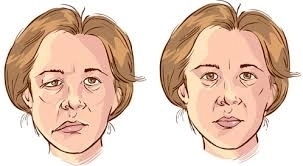
How Physical Therapy Helps Treat Facial Nerve Inflammation (Bell’s Palsy)
Published on: 2025-06-14 | Written by: Dr. Suhaila Youssef Muhammad, for Physical Therapy
Facial nerve inflammation, also known as Bell’s Palsy, is a common neurological condition that affects the movement of facial muscles and impacts a person’s ability to control facial expressions. Fortunately, physical therapy plays a vital role in improving symptoms and restoring normal facial function.
✅ What Is the Facial Nerve (Seventh Cranial Nerve)?
The seventh cranial nerve is responsible for controlling facial muscles, as well as certain functions of the tear and salivary glands and taste sensation in the front part of the tongue. When this nerve becomes inflamed or compressed, it causes sudden weakness or paralysis on one side of the face.
✅ Common Symptoms of Facial Nerve Inflammation:
-
Drooping or sagging on one side of the face
-
Difficulty closing the eye or smiling
-
Dryness in the eye or mouth
-
Altered taste sensation
-
Increased sensitivity to sound in one ear
✅ The Role of Physical Therapy in Treating Bell’s Palsy:
Studies show that physical therapy significantly speeds up recovery and reduces long-term complications. Key therapeutic methods include:
1. Facial Exercises
Patients are trained to perform targeted exercises to activate weak muscles and improve coordination between affected and unaffected muscles, such as:
-
Raising the eyebrows
-
Controlled smiling
-
Puffing the cheeks
-
Tightly closing the eyes
2. Electrical Stimulation
Electrical stimulation is used to activate dormant muscles and enhance blood circulation, aiding nerve recovery.
3. Manual Therapy and Massage
Therapists perform specialized massage techniques to reduce muscle stiffness and improve blood flow in the facial area.
4. Heat and Cold Therapy
Using warm compresses and cold packs helps reduce inflammation and improve nerve conduction.
5. Daily Care Guidance
Patients are advised on how to care for their eye (especially if it doesn’t close fully) and how to maintain regular facial muscle activity.
✅ When Should Physical Therapy Begin?
Dr. Soheila Youssef Mohamed recommends beginning physical therapy within the first week of symptom onset to ensure optimal recovery and prevent complications like muscle contractures or facial asymmetry.

